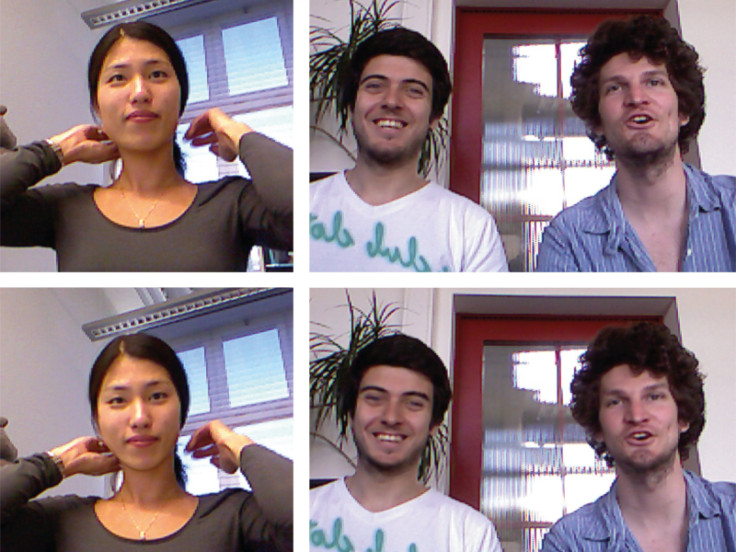Artificial Eye Contact: Skype Software Could Let Users Chat Just Like In Real Life
Using Skype or any program with a webcam, to talk to friends, family or conduct business has one inherent flaw, the lack of eye contact that comes from staring at the computer screen and not the camera. New software is looking to correct that problem, letting users make direct eye contact and solving years of awkward conversations.

The software solution, developed by researchers from Eidgenössische Technische Hochschule Zurich (ETH Zurich), is rather simple and can go a long way to creating a conversation that feels “real.” Artificial eye contact can be created by rotating the face in the video and can be adjusted by the user.
Using Kinect, a camera developed by Microsoft and used in the Xbox 360 and PCs, the developers have created software that can create a depth map that is combined with a facial recognition program. The recognition occurs in real-time and the software, developed by Claudia Kuster, a doctoral student at the university, uses an algorithm that only rotates the face. According to the developers, the rotated image is blended on to the original image by finding a border with similar colors.
The software can adjust the image based on changing light conditions and will not alter the image, leaving the original image in place as a user turns away from the camera or if their face is hidden by a cup or other object. “The software can be user adjusted in just a few simple steps and is very robust,” said Kuster in a statement. The gaze-correcting software can process two faces at the same time, allowing for multiple users in a video conference call, but the program cannot recognize a face when users wear glasses.
For now, the software is limited to the Kinect but there plans to create a Skype plug-in that users can download. The developers are also creating software that can be used on a smartphone using a standard camera system.
© Copyright IBTimes 2024. All rights reserved.












